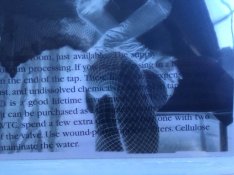Gerald C Koch
Member
It's very difficult for an inexperienced person to tell the difference between an under-exposed negative and an under-developed one. The same difficulty exists for an over-exposed one and an over-developed one. Many books on photography show a 3X3 matrix of negatives. They range from the upper left one which is under-exposed and under developed to the lower right one which is over-exposed and over-developed. Only the negative in the middle is correctly exposed and developed. The knack is not easily taught with words. See if you can find such an illustration and sturdy it well.



 ;
;
